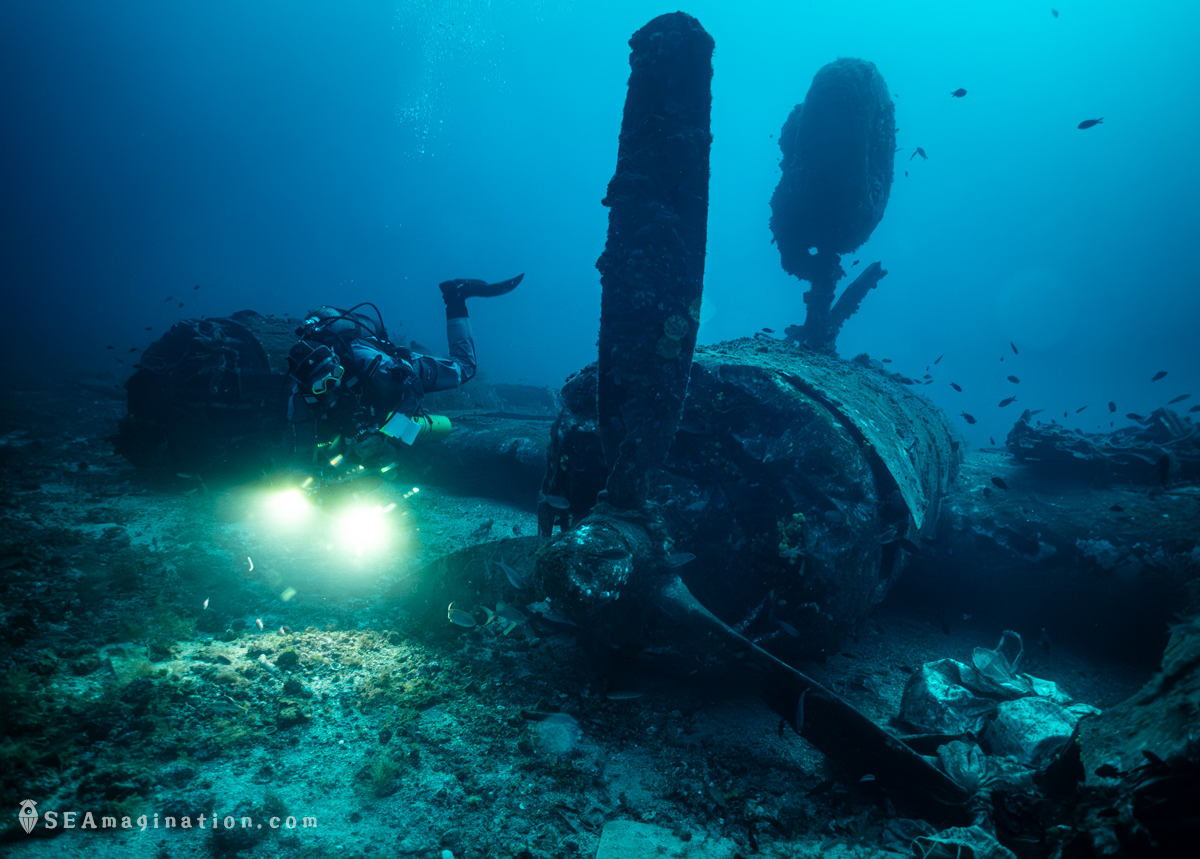We have 3D scanned the wreckage of the Tulsamerican, the famous WWII B-24 Liberator bomber that crashed near Vis, Croatia. Now anyone can explore it online. This is a project by our company SEAmagination and the Submerged Foundation.
About the Tulsamerican (the wreck of B-24 in Vis)
The Tulsamerican was a B-24 Liberator bomber and the final aircraft of its type produced at the Douglas Aircraft Plant in Tulsa, Oklahoma, funded by employees, their families and the local community through war bonds. On December 17, 1944, it embarked on a mission targeting German oil refineries around Blechhammer and Odertal, but sustained severe damage from anti-aircraft fire, leading to engine failures. Despite the crew’s valiant efforts to reach safety, the aircraft crashed into the Adriatic Sea just minutes away from landing on the island of Vis, Croatia. The plane sank rapidly, but swift rescue operations by Allied forces on the island resulted in the recovery of several crew members. Discovered in 2009, the wreckage has since become an underwater heritage site. The wreck is broken into several parts, with the larger section containing the wings, engines, and cockpit resting at around 40 meters, while the tail section lies deeper at 52 meters. Divers can explore this historical site by diving with one of the local licensed dive centres, ensuring the preservation and respectful exploration of the remains.
3D scanning the Tulsamerican
We undertook an ambitious project to 3D scan the wreckage of the aircraft using a technique called photogrammetry. This method involves taking a multitude of photographs from various angles to create a detailed and accurate three-dimensional representation. Over the course of numerous dives, we meticulously captured over 8000 photographs of every intricate detail of the aircraft. Each dive required careful planning and execution to ensure we covered all necessary angles and lighting conditions.
Once we had the photographs, we used Agisoft Metashape, a specialized software designed to process large sets of images into a coherent and photorealistic 3D model. This stage of the project was highly complex and time-consuming.
Our team spent several weeks working tirelessly, refining the model through many iterations to achieve a satisfying result. The final product is a highly detailed 3D model that captures the essence and intricacies of the wreckage. Now, this model can be viewed and explored by anyone online, offering a unique opportunity to those who are unable to dive.
The online version of the model is optimized to ensure broad accessibility. While it maintains high detail, it is not the highest possible resolution. This optimization is necessary to ensure that the model can be easily viewed on average mobile phones and other devices, making it widely accessible to the general public.
However, we have plans to make the most detailed version available to museums, educational institutions, and other organizations with a vested interest in the history of this aircraft. This highest-resolution model will offer unparalleled detail and fidelity, providing an invaluable resource for historical research, preservation efforts, and educational purposes.
Our project demonstrates the power of modern technology, especially underwater photogrammetry, in historical preservation and education, allowing people from around the world to explore and appreciate this remarkable wreckage without ever needing to dive into the depths themselves.
The interactive 3D model of the Tulsamerican
The 3D model of the Tulsamerican (the B-24 Liberator wreck in Vis) was created by Mariusz Milka, our Digital Heritage Specialist, based on photographs taken by him and Ewelina Heil, our Underwater Photographer.


